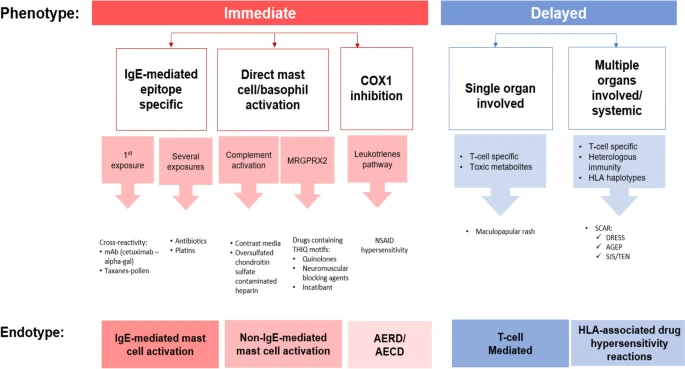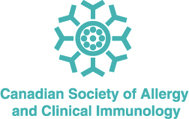Jeimy, S., Wong, T., Ben-Shoshan, M. et al. Allergy Asthma Clin Immunol 20 (Suppl 3), 78 (2024). https://doi.org/10.1186/s13223-024-00936-1
Abstract
 |
| Drug allergy classification based on phenotypes and endotypes |
Key take-home messages
- Drug allergy encompasses a spectrum of immunologically mediated hypersensitivity reactions (HSRs) with varying mechanisms and clinical presentations.
- Risk factors for drug allergy include age (more common in young/middle-aged adults), gender (more common in females), genetic polymorphisms, certain viral infections (HIV and herpes viruses) and drug-related factors (topical and IV/intramuscular routes of administration are more immunogenic than oral administration).
- The skin is the organ most frequently affected by drug-induced allergic reactions; however, many other organ systems may be involved, including multi-organ reactions such as anaphylaxis.
- Referral to an allergist is important for the appropriate diagnosis and treatment of drug allergy.
- Diagnosis requires a thorough drug history, including dates of administration, drug formulation, dosage and route of administration, as well as clinical symptoms and their timing and duration in relation to drug exposure; skin testing and graded challenges may also be required.
- The mainstay of treatment is avoidance of the offending drug; alternative medications with unrelated chemical structures should be substituted when possible.
- If a particular drug to which the patient is allergic is indicated, induction of drug tolerance procedures may be considered to induce temporary tolerance to the drug.

No comments:
Post a Comment